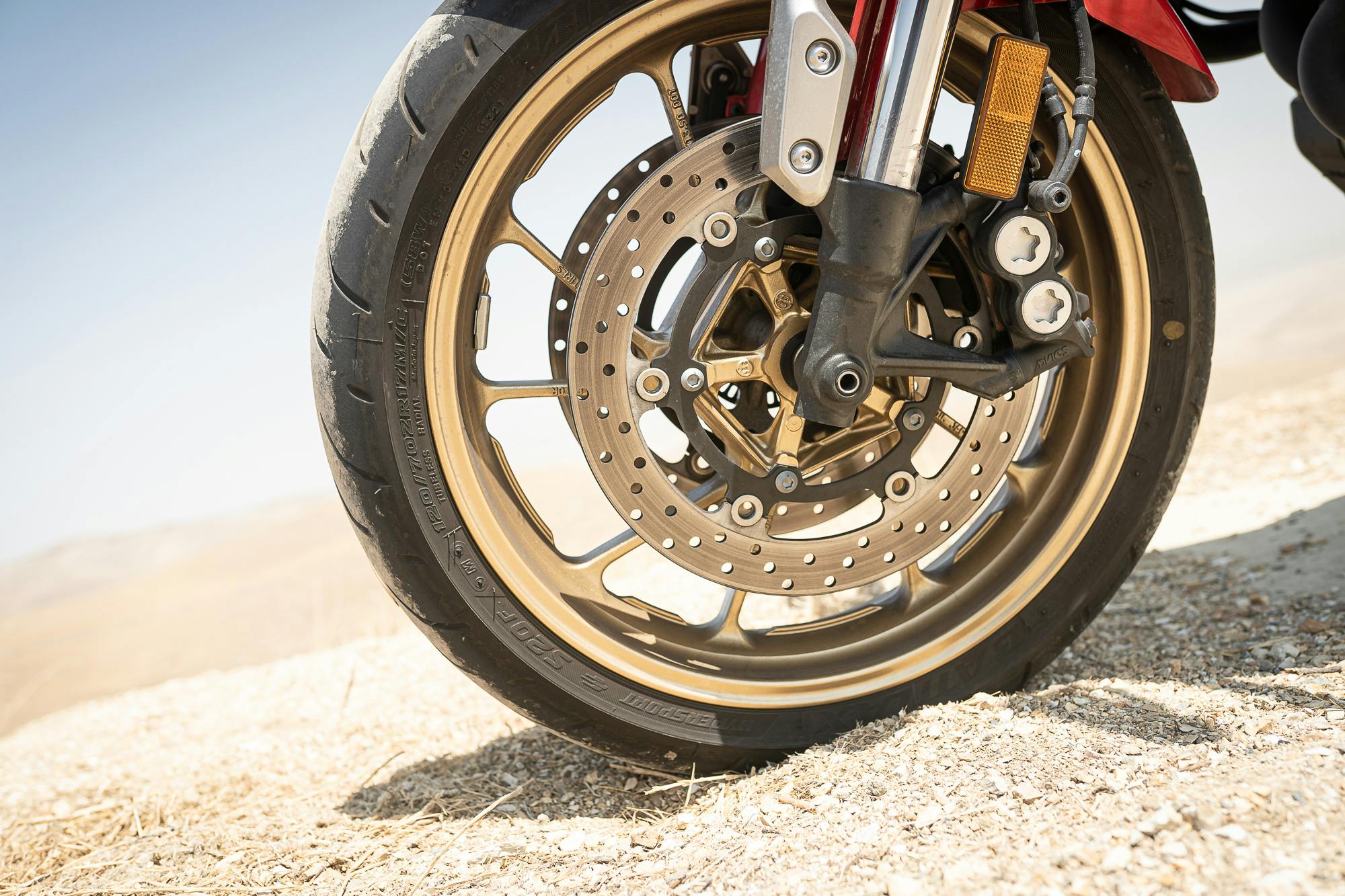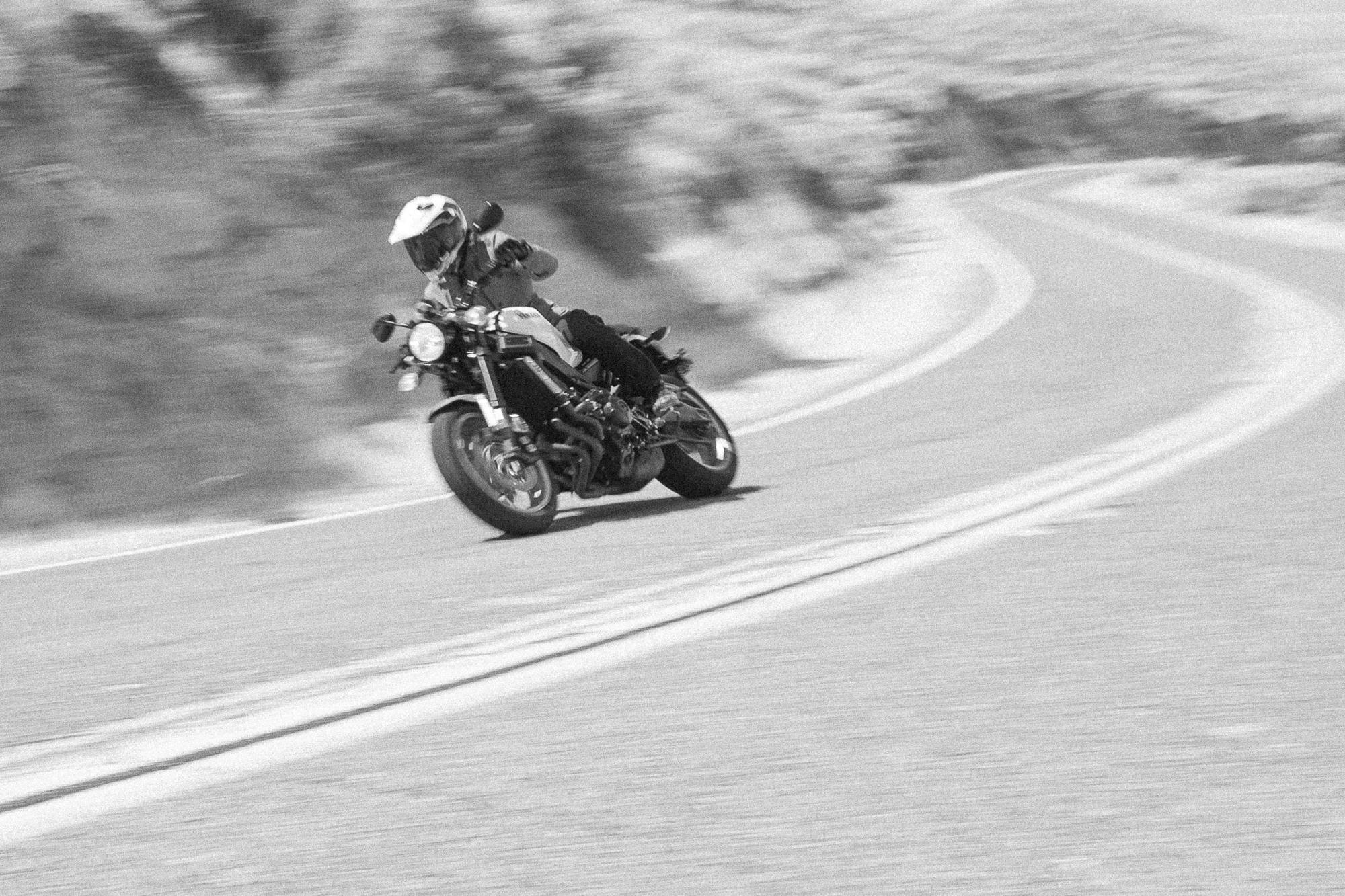Media | Articles
Review: 2021 Yamaha XSR900
Crossover. Unless you’re an audio engineer building up a loudspeaker, it’s probably a dirty word to you. Musicians use it derisively to label songs that are milquetoast enough to appeal across genre; think Elvis Presley, Vanilla Ice, late-period Metallica. Autowriters have applied it to the ticky-tacky boxes that combine the drawbacks of a truck and car while possessing few virtues of either; the “CR” in “Honda CR-V” stands for “crossover”. To say that something has “crossover appeal” is to damn it with the faint praise of Revelation 3:15-16.
For all the above reasons, I know calling the Yamaha XSR900 a “crossover” won’t increase its appeal to motorcyclists, who in the past few decades have split the bike business into a hundred different micro-segments, each with its own purity tests and disdain for everything outside a narrow definition. If you’ve ever read a Facebook argument between proponents of the Harley Electra Glide and the Harley Road Glide, you know what I mean here. Hear me out for a moment, though: the XSR900 is a great bike because of its crossover appeal.
A few months back, we rode the XSR together with the Kawasaki Z900RS and Triumph Speed Twin. If you read Kyle Smith’s outstanding reviews of these bikes, you’ll see that they are deadly serious about being retro rides. Kawasaki made a whole new steel frame for the Z900RS just so you wouldn’t confuse it with the (modern-)traditional trellis Kawasaki Z900, while the Speed Twin is conceived pretty much from the ground up as a motorcycle with both feet firmly in an idealized past.

The XSR900 ain’t about that life, cuz. It uses the aluminum perimeter frame and 115-horse, 847cc triple from the well-received but somewhat insectile FZ-09 and dresses it up in some retro bits. (For 2021, the MT-09, which replaces the FZ-09, got a new engine and frame. Those changes are being reflected in the 2022 XSR900, which is on the way to showrooms as we speak.) The end result is highly dependent on your chosen color schemes. Early XSRs came with a brushed-clear tank and a brown seat; that looked kinda Sixties. Then Yamaha did a yellow-and-black heritage bike that drew from the old RZ350; that looked kinda Eighties. In the red/white scheme of our test bike, the XSR, well… If you’re over forty years old, it just looks like a motorcycle. Unless you park it next to one of today’s sci-fi naked bikes, it doesn’t have any retro vibe at all.
Nor does it feel particularly historic from behind the bars. A single round LCD conveys limited information but compared to any bike made before 2010 it looks as new as tomorrow. Here’s what makes an impression on the rider: the sheer size and heft of the thing. The seat is sky-high and the bars are motocross-wide. Your humble author is six foot two with 37-inch sleeves; even my ZX-14R is fairly modestly sized for me. The XSR900, by contrast, seems enormous. Make sure you fit on this bike before you even think about buying it. Yamaha makes an XSR700 for people who don’t have the proportions of a prehistoric primate, and many (most?) riders would be happier with that.
Marketplace
Buy and sell classics with confidence

This was the strongest of our three bikes by a long shot; during impromptu “pulls”, the rider on the XSR could give the Z900 a couple of bike lengths then whack the throttle and effortlessly zip past the Kwacker. The Speed Twin? Even easier meat. There’s nothing to suggest that the XSR is any slower than a standard FZ-09, which means it will effortlessly dispatch anything short of a literbike. Yes, some 750cc and 600cc sportbikes are faster in the quarter-mile, but in the real world the Yamaha has the kind of torque that asserts itself immediately in all situations. While the 600cc wonderbikes are searching for a gear that will let them rev to 15,000 and above, the big triple XSR is just gone.
We usually test our bikes on the same SoCal loop that incorporates a few hundred miles of twisty roads, starting and ending with a freeway run. The XSR was everyone’s desired bike for the superslab; it’s perfectly stable at all speeds and has the least cramped riding position. On Route 33 north of Ojai, however, it was the booby prize. Yes, it can catch the Kawasaki and Triumph on the straights, and yes you’ll need to do that again and again. The wide bars should give more leverage for leaning into a corner but instead they just make the bike feel dangerously unwieldy, while the high seating position exaggerates the fear factor of cranking down towards the apex. While the Speed Twin encourages the rider in the pursuit of pace, and the Kawasaki cooperates, the Yamaha seems determined to stay upright. Anything less than absolute commitment is punished with a wobbly entry and a wandering exit.
At least four times during our trip, I found myself taking the Triumph Speed Twin through a road that had stymied me on the Yamaha and thinking, “What was all the fuss about?” This really shouldn’t be the case; as the most modern, and most powerful, bike in our little trio, the XSR900 should have eviscerated the other two. Instead, it was a straight-line superstar with a true reluctance to make pace in the mountains. One suspects that Yamaha did this deliberately, to engineer a false difference between the FZ-09 and its “retro” sibling.

The truest, and the least pleasant, thing I can think to say about the XSR900, is this: At no point during our week on these bikes would I have refused a trade with my personal 2014 CB1100. The air-cooled Honda is a true retro bike. It’s more comfortable, happier at all rev ranges short of the redline, and built with far more care. For the Yamaha fans out there, I can repeat this same statement regarding my old 2000-era YZF600R, which has this XSR beat for everything but raw torque.
Get down into the cityscape of Los Angeles, however, and the big triple regains some of its charm. The high seat lets you make better lane-splitting choices, the wide bars give leverage for last-minute moves, and the engine is perfectly suited to provide big power at little to no notice. Speaking personally, I’d rather have a plain FZ-09 or MT-09. Those bikes are a little more honest about what they are and what they do. If you prefer the look of the “retro” version, however, don’t let me talk you out of it. I suspect that a lot of people who wouldn’t look twice at an old-fashioned Z900RS will give this Yamaha serious consideration. That’s the thing about crossover products: they’re popular, and people like them.
2021 Yamaha XSR900
Base price/as-tested: $9,499
Highs: Serious power, modern features, not bad on the open road for a naked bike.
Lows: Retro vibe is skin-deep, it doesn’t like to lean, engine could use a bit more character.
Summary: Don’t think of this as a throwback bike, but rather as an FZ-09 for people who can’t stand the way an FZ-09 looks.































